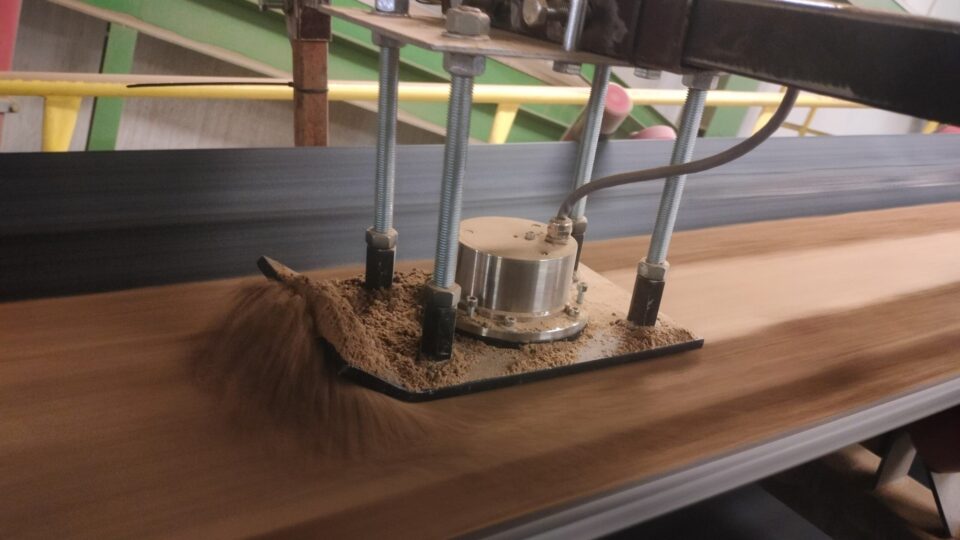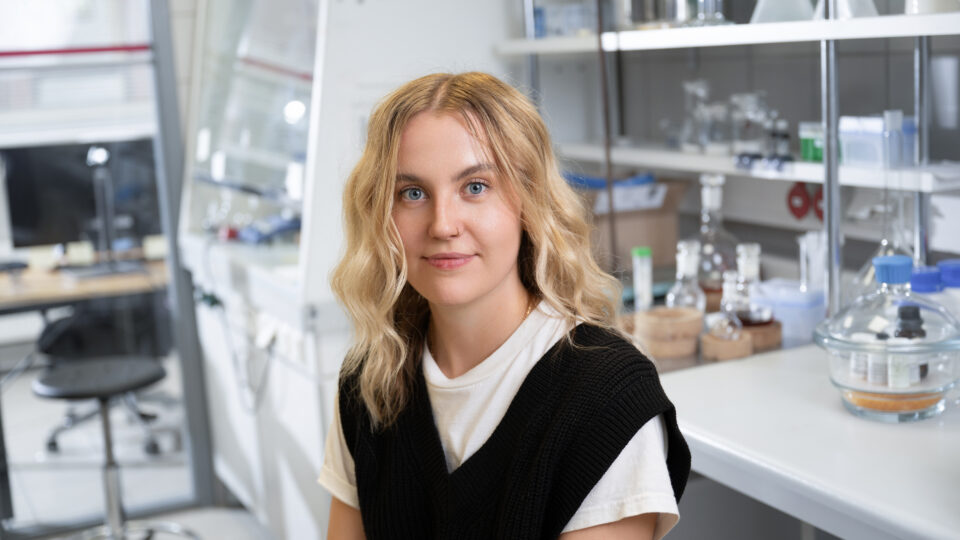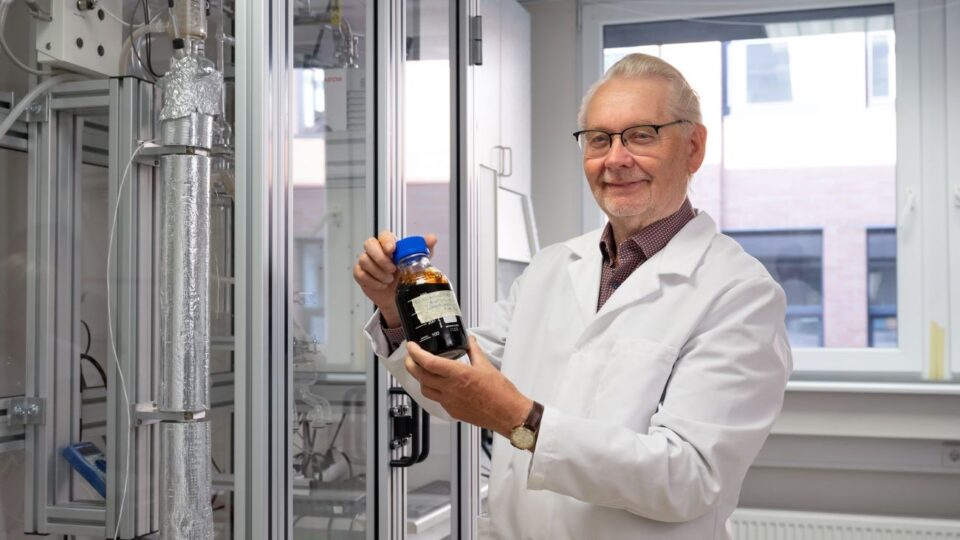Estonia’s oil shale – kukersite – has for decades been the country’s main energy source. It has been burned in power plants and used in oil production. However, direct combustion no longer meets environmental standards, and oil production doesn’t extract the full value from the resource. At the same time, EU strategic documents emphasize that access to critical raw materials is increasingly important for the green and digital transitions and for economic resilience.
Fragrances from kukersite

The industrial chemistry group researching oil shale valorization at TalTech’s Industrial Chemistry Lab. Photo: TalTech
Europe with less dependency
The aim of the project is to develop chemical transformations and technological solutions that enable more efficient conversion of kerogens from various sources and better utilization of mineral resources. The knowledge gained also contributes to research on phosphorite and metal ores, which generally don’t focus on oil shale layers. A renewed perspective on the potential of waste rock would allow oil shale to be valorized as a byproduct, thereby supporting the circular economy principle: one industry’s waste becomes another’s raw material.
The results would extend beyond Estonia—oil shale is more widespread than oil or coal, and its processing residues can be found from China to Brazil.
The plan is to establish a new, modern, and sustainable branch of the chemical industry in Estonia, which would reduce Europe’s dependence on imported chemicals. The potential products could be used in polymers, construction foams, pharmaceuticals and cosmetics, and lubricant additives.
This would lower the EU’s import needs and raise the profile of Estonia’s chemical industry. The project aligns with the goals of the European Green Deal and Estonia’s oil shale strategy and could provide strong momentum for a knowledge-based industrial sector.
The project “Sustainable Valorization of Organic Components of Estonian Mineral Resources and Secondary Raw Materials into Chemicals” (TEM-TA128, 1.04.2024–31.12.2028) is co-funded by the European Union and the Ministry of Education and Research.




